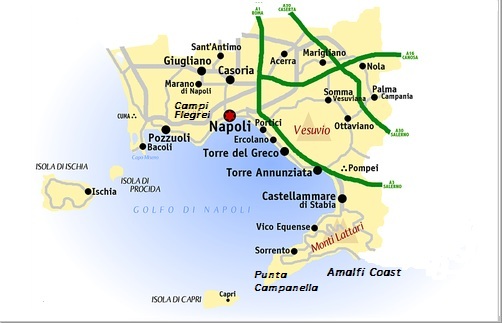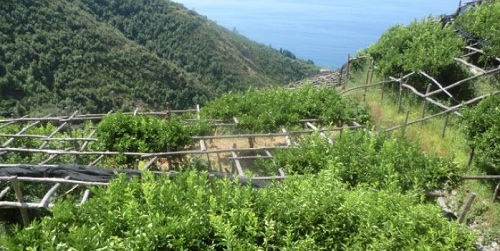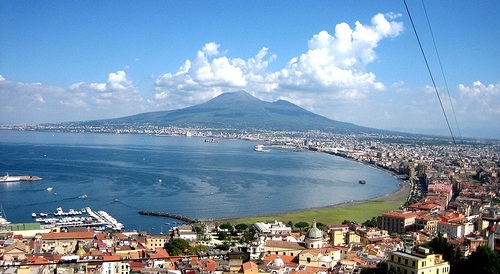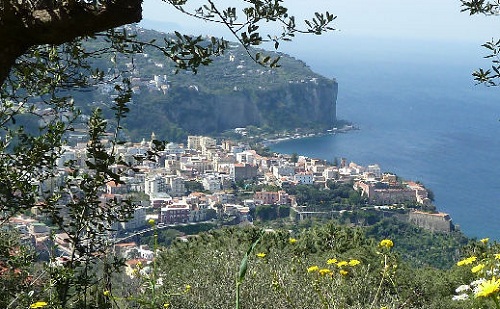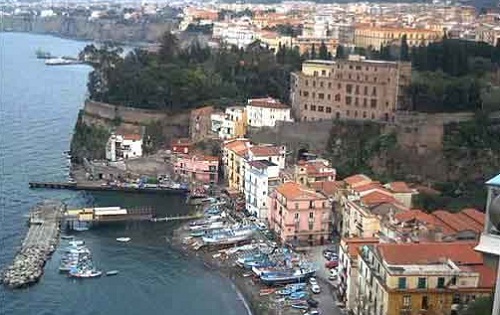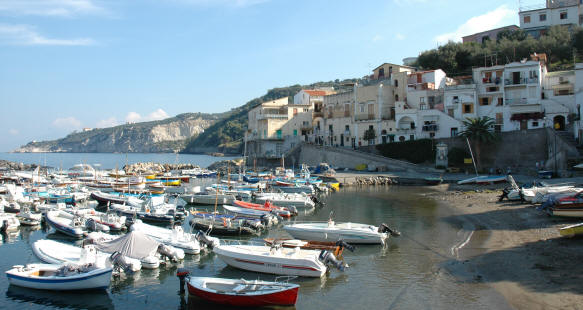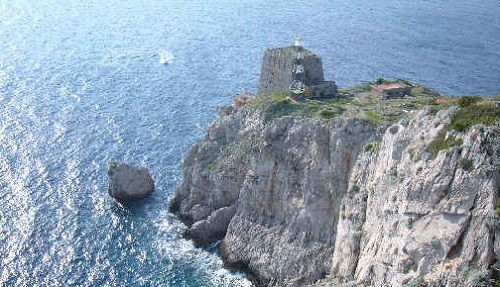
|
||||||||||||||||||||||||||||||||||||||||||||||||
|
||||||||||||||||||||||||||||||||||||||||||||||||
|
|
Sorrento Coast
The marvellous natural scenery makes the Sorrentine Peninsula one of the most famous tourist destinations in Italy. Protruding into the Tyrrhenian Sea, almost touching the island of Capri, it extends from Castellamare di Stabia to Punta Campanella, watershed between the gulfs of Naples and Salerno. Art and tradition characterize the numerous towns, the most famous of which is Sorrento: perched on an imposing cliff over the sea, this charming town holds on to its medieval and classical memories, while also preserving Renaissance and Baroque architecture.
In this very famous area there is no lack of ‘wellness tourism’, like the thermal baths at Vico Equense, one of the most picturesque towns of the coast. But the great attraction of this land is in its natural beauty: the coastal road is one of the marvels of Italian scenery. Citrus groves, vineyards and olive groves that softly pour down the slopes towards the sea, the road follows the tortuous coastline, where curve after curve opens up incredible views of the Gulf of Naples, Vesuvius and Capri. The coast is high, craggy and rocky, with sheer limestone cliffs that crumble into the sea, coves and rocky shores.
- Suggested Itinerary -
Castellamare di Stabia is famous for its shipyards and its thermal spa establishments. The name comes from a medieval castle (castrum ad
Vico Equense - Vico Equense, famous for its thermal baths also preserves numerous traces of the past: the Annunziata Church, the only From Vico Equense the road becomes tortuous, following the sinuous slopes of Mount Lattari. The road follows down all the way to Meta, a holiday swimming area with the lovely beaches of Marina di Meta and Alimuri. In the historic centre of town is the noted Santa Maria del Lauro Basilica. From Piano di Sorrento, a natural terrace of tuff rock, Sorrento can be admired from afar, and, behind Punta del Capo the profile of Capri is visible.
Sorrento is one of the most popular destination on the coast, easily reached from Naples and Pompei, as it lies at the south-eastern end of the Circumvesuviana rail line. The town overlooks the Bay of Naples as the key place of the Sorrentine Peninsula, and many viewpoints allow sight of Naples itself, Vesuvius and the Isle of Capri. Sorrento is a city to be enjoyed in all seasons for its mild climate, the perfume of its gardens and the panoramic terraces that give onto the sea. The town became famous in the 1800’s, but its history has much deeper roots. The name Surrentum is possibly tied to the legend of the siren and theories of a Phoenician foundation are entertained. What is certain is that in Roman times it was the favorite dwelling of the aristocracy.
The town centre is piazza Tasso. The Cathedral dates to the 15th century. The archeological section is important, with its famous Base of Augustus, as is the medieval section with marble works of the 10th and 11th century. The San Francesco Church is from the 1700’s, and from there you can get to the Villa Comunale, a public garden on the edge of a sheer cliff that offers spectacular views.
Massa Lubrense - After Punta del Capo, where the ruins of Villa of Pollio Felice (1st century BC, known as the Baths of the Regina Giovanna) face the sea, is Massa Lubrense, a popular and panoramic health The town is less well known than others on the Peninsula and therefore not as affected by mass tourism. Thanks to this, it retains its secluded nature and preserves flavours and that special feeling lost in other places, like the old farm buildings. Close by is Marina della Lobra, a fishing village with its houses built on the beach and at the little port. Around Massa Lubrense there are many charming little villages: Termini, Nerano, a town halfway up the shore with houses and terraces that come down towards the sea, and the vast and beautiful Marina del Cantone. There more then 100 km of marked trails and some of the region's best restaurants.
Punta Campanella - From Massa you can continue to the far extreme of the Sorrentine Peninsula, in front of Capri: Punta Campanella. In antiquity this place was sacred: perhaps it was here that the Greek temple dedicated to the sirens, so written about by the ancient authors, surged. In the Classic Era the temple was dedicated to Athena, the Romans then built a road that led to it from Sorrento. Some of the old stoneslab paved stretches are still visible as one nears the Punta. The tower-lighthouse, built in 1335 and rebuilt in 1566, signalled the arrival of pirates with the sounding of a bell, hence the name of the Point: Campanella means bell. Here one discovers the wilder and more enchanted face of the coast. One can explore this fascinating natural environment following a trail that reaches the evocative Bay of Ieranto, a rocky cove at the feet of Mount San Costanzo, today the property of the FAI (Italian Environmental Foundation) who insures its environmental integrity.
Note : In summer the coast is packed and you need to organize yourself, especially if you are driving. The main difficulty is to find parking. Licensed parking areas are very few and extremely expensive. The towns of the costiera Sorrentina are close enough and moving around by bus might very well be the most sensitive solution. Connecting Naples to its municipalities are the SITA busses with daily rides. Departures are organized so that you do not have to wait long. Naples main attractions | The islands | The Region | The provinces > Naples | Caserta | Salerno | Avellino | Benevento | Amalfi Coast | The Hamlets > Nusco | Cusano Mutri | Atrani | Castellabate | Furore | Sorrento Peninsola official web site |

|
||||||||||||||||||||||||||||||||||||||||||||||
|
||||||||||||||||||||||||||||||||||||||||||||||||
